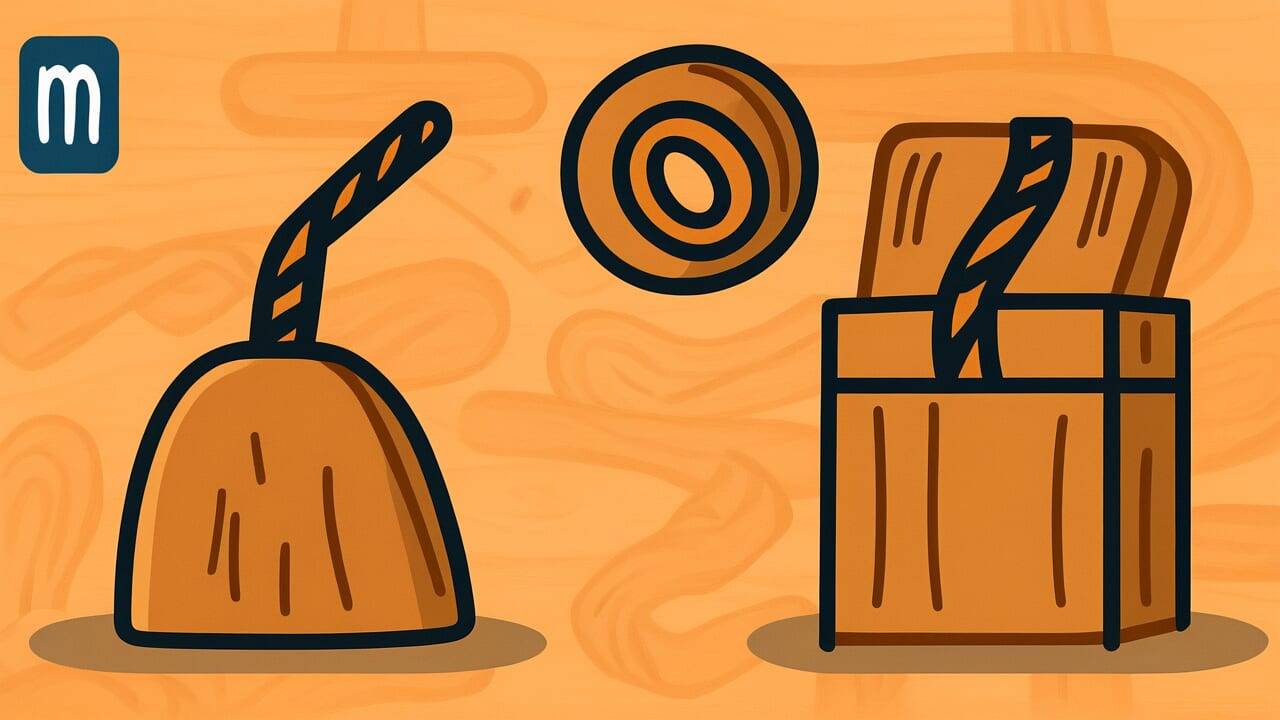How to Read “A tree, if it follows the rope, becomes straight”
ki, nawa ni shitagaeba sunawachi tadashi
Meaning of “A tree, if it follows the rope, becomes straight”
This proverb means that if you humbly accept guidance, you can walk the right path. Just as crooked wood becomes straight when it follows the carpenter’s marking line, people can live correctly by humbly following excellent teachers and proper teachings.
The proverb emphasizes the importance of recognizing your own inexperience. It teaches that you should humbly accept advice from experienced people and established teachings.
Rather than insisting on your own way or sticking to self-taught methods, the fastest path to growth is staying faithful to the basics. You should practice exactly as you’re taught.
Today, people often use this saying in mentor-student relationships and educational settings. It applies when new employees listen carefully to senior staff guidance, or when students in traditional arts follow their master’s teachings.
The proverb remains relevant as a reminder not to interpret things selfishly. It stresses the importance of first learning the correct form.
Origin and Etymology
This proverb is believed to originate from ancient Chinese classical thought. It has particularly deep connections with Confucian educational philosophy.
The “tree” refers to crooked or warped raw material. The “rope” refers to the carpenter’s ink line called suminawa.
The suminawa is a tool carpenters use to cut wood straight. They press an ink-soaked rope against the wood and snap it to create a straight line. Even crooked wood becomes straight and proper when carved according to this line.
This physical process became a metaphor for human education. Immature people can walk the right path if they humbly follow the “rope” of excellent teachers and correct teachings.
Similar expressions appear in the ancient Chinese text “Xunzi.” The saying has been passed down and used in Japan since ancient times.
Because this metaphor comes from everyday carpentry work, it powerfully conveys the essence of education. The saying contains practical wisdom that emphasizes following correct standards over worrying about the quality of raw materials.
Usage Examples
- When you’re new, it’s important to humbly learn from seniors’ methods, just as a tree, if it follows the rope, becomes straight
- She improved quickly because she approached her master’s teachings with the spirit of a tree, if it follows the rope, becomes straight
Universal Wisdom
The universal truth this proverb speaks is the power of humility in human growth. We all start as “crooked trees” in our immaturity. We begin lacking knowledge and experience, unable to judge what’s right.
Here humans face a conflict between pride and growth. Humbly accepting teachings means admitting your own ignorance and immaturity. This can feel humiliating and seems to wound your self-respect.
That’s why many people try to stick with their own methods rather than accept guidance.
But our ancestors understood something important. True strength lies in acknowledging your weaknesses. The most efficient path to growth is following already-established correct methods. This insight strikes at the essence of human learning mechanisms.
This proverb has been passed down through generations because the human growth process never changes, regardless of the era. In any field, you cannot master advanced skills without learning the basics first.
Only by learning the correct form can your own creativity eventually blossom. This proverb teaches that humility is actually the most rational growth strategy.
When AI Hears This
In information theory, a “reference signal” is critically important for transmitting data accurately. When you send a photo on your smartphone, the data can be correctly restored even if electrical interference distorts it.
This works because the sender and receiver share a common standard. Without this standard, you cannot determine what’s wrong.
The “rope” in this proverb serves exactly the same role as this reference signal. Wood as a physical object inevitably contains distortions and curves from natural growth.
If a carpenter tries to judge “straight” by eye alone, their judgment changes depending on viewing angle and distance. The observer themselves contain error.
But when you apply a stretched rope as an external standard, the wood’s errors become immediately obvious.
What’s interesting is that the rope itself isn’t perfect either. In information theory, reference signals can also contain noise. But statistically speaking, measuring multiple times or checking with multiple standards dramatically reduces errors.
Carpenters also increased precision by combining multiple standards like the ink pot and carpenter’s square, not just one rope.
This principle is applied in quality control too. Factory inspections compare against “reference samples” because external standards are overwhelmingly more reliable than human subjective judgment.
Ancient craftsmen understood through experience the essence of information theory: you cannot detect errors through self-reference.
Lessons for Today
This proverb teaches modern people the importance of having courage to follow reliable guidance, especially in our information-overloaded age.
Today, anyone can share information on the internet. Countless opinions and methodologies overflow around us. We’re tempted to search for our own interpretations and unique methods.
But what truly matters is first acquiring a solid foundation.
When you start something new, try humbly following the teachings of someone with proven results. This isn’t blind obedience—it’s a wise choice.
With a solid foundation, you can build your own uniqueness on top. But if you neglect basics and insist on your own way, you’ll inevitably hit a wall.
I especially want young people to value a humble learning attitude. Humility isn’t weakness. It’s a smart strategy for choosing the shortest route to growth.
When you find a “rope”—an excellent teacher, senior, or established methodology—try following it first. That experience will eventually become your own solid axis and life compass.



Comments